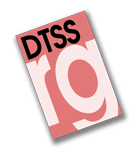Una aproximación al nuevo contrato formativo a la espera de su desarrollo reglamentario. (RI §425587)

An approximation to the new training contract pending its regulatory development -
Miguel Gutíerrez Pérez
La reforma laboral ha incidido sobremanera en la remodelación de los contratos laborales, bien eliminado algunas figuras contractuales, bien reformulando algunas otras, tal y como es el caso de los contratos formativos, los cuales han sido sustituidos por un nuevo contrato formativo, con dos modalidades, las cuales vienen a acoger, cada una de ellas, a los anteriores contratos formativos. Además de dar cabida en este contrato a una figura contractual ya existente, como es el contrato para la formación dual universitaria. En este nuevo contrato formativo el legislador pone el acento en la actividad formativa, por encima de la inserción laboral, aun cuando aquella tampoco ha caído en el olvido, prueba de ello es que también se reajustan diferentes condiciones de trabajo del contrato en sus dos modalidades.
I. CONSIDERACIONES PREVIAS.- II. EL CONTRATO DE FORMACIÓN EN ALTERNANCIA. 1. El cambio de denominación y la ampliación del objeto del contrato. 2. La modificación del ámbito subjetivo del contrato. 3. La reducción de la duración del contrato. 4. El establecimiento de restricciones a este contrato. 5. Modificaciones en las condiciones de trabajo: Tiempo de trabajo y retribución. 6. La prevalencia de la finalidad formativa. 7. El mantenimiento de la cotización especial para estos contratos.- III. CONTRATO FORMATIVO PARA LA OBTENCIÓN DE PRÁCTICA PROFESIONAL. 1. Ámbito subjetivo del contrato. 2. Algunos retoques en la duración del contrato. 3. Restricciones de esta modalidad contractual. 4. Condiciones de trabajo: tiempo de trabajo y retribución. 5. Aspectos formativos contemplados en el contrato.- IV. EL ESTABLECIMIENTO DE REGLAS COMUNES PARA AMBAS MODALIDADES.- V. LA CONCRECIÓN REGLAMENTARIA DEL CONTRATO. VI. A MODO DE RECAPITULACIÓN.- VII. BIBLIOGRAFÍA.
The labor reform has greatly influenced the remodeling of labor contracts, either eliminating some contractual figures, or reformulating some others, as is the case of training contracts, which have been replaced by a new training contract, with two modalities, which come to host, each of them, the previous training contracts. In addition to making room in this contract for an existing contractual figure, such as the contract for dual university training. In this new training contract, the legislator puts the emphasis on training activity, above job placement, even though that has not been forgotten either, proof of this is that different working conditions of the contract are also readjusted in its two modalities.
I. PREVIOUS CONSIDERATIONS.- II. THE ALTERNATING TRAINING CONTRACT. 1. Change of name and extension of the object of the contract. 2. Modification of the subjective scope of the contract. 3. The reduction of the duration of the contract. 4. The establishment of restrictions to this contract. 5. Changes in working conditions: Working time and remuneration. 6. The prevalence of the training purpose. 7. Maintenance of the special price for these contracts.- III. TRAINING CONTRACT TO OBTAIN PROFESSIONAL PRACTICE. 1. Subjective scope of the contract. 2. Some tweaks to the length of the contract. 3. Restrictions of this contractual modality. 4. Working conditions: working time and remuneration. 5. Training aspects contemplated in the contract.- IV. THE ESTABLISHMENT OF COMMON RULES FOR BOTH MODALITIES.- V. THE STATUTORY SPECIFICATION OF THE CONTRACT.- VI. BY WAY OF RECAPITULATION. VII. BIBLIOGRAPHY.
